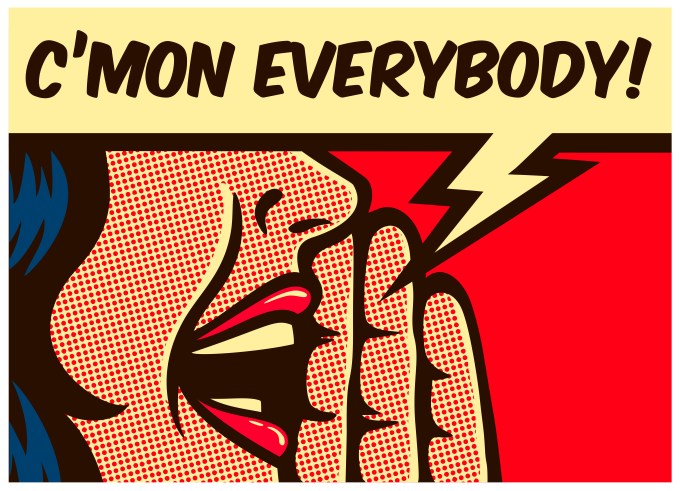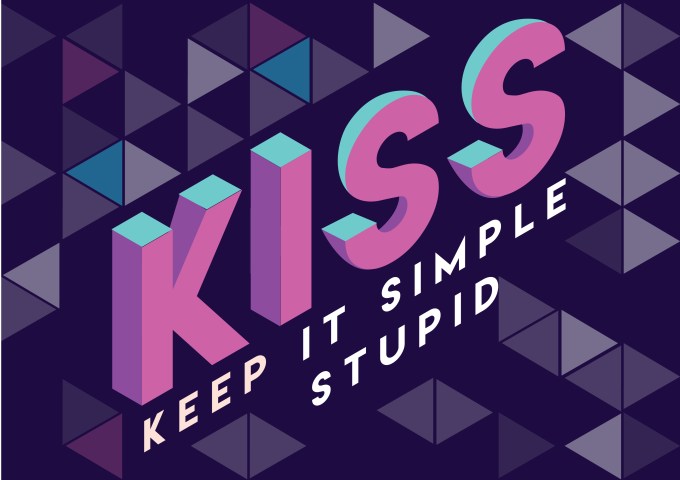
Get more leads with these 5 golden rules for effective copywriting
All of us write every day: emails, texts, notes, presentations, … But few of us have really mastered the art of writing. In this blog post, I’d like to walk you through 5 golden rules for effective copywriting that will have the most profound impact on your copy if you don’t follow them yet.
1. Write for the customer, not for you
Your copy should always focus on the reader or customer. That means 3 things:
- speaking the customer’s language,
- addressing them properly,
- and focusing on benefits for them (not for you!).
Speaking your customer's language

If you’re trying to persuade people to do or buy something, you should use the language they use and think in. Speaking in their language helps prospects get to know, like, and trust you because they recognize themselves in your words. That helps you connect and build relationships with them, which in the end makes it easier to convert them.
If you haven’t already done it, go back to your texts and make sure everything sounds the way your customers think. Put yourself in their shoes and understand their problems, struggles and worries. Not only will your copy get better for the exercise, but getting out of your own way like this can jumpstart new ideas and illuminate what should come next.
Focus on benefits

Virtually all successful copy discusses benefits, not features. You talk about what your product does, not what it is. And whatever your product does, should always benefit the customer – why else would they buy it?
Putting one or more benefits in your headlines is a good practice, too. Does your product or solution help your customer make the right choice, save time or money? Tell ‘em!
Plus, focusing on benefits is a relatively easy fix if your current copy isn’t doing so well. Again, go back to some of your earlier texts and make sure every feature you mention leads to a benefit.
Evaluate your copy’s ratio of talking to the customer vs. talking about yourself
Effective copywriting (and by extension, content marketing) always starts with the customer. No one reads copy that only talks about your company. Try to use “you” at least twice as often as “we”, “I” or your brand name. Through this simple trick, you’ll naturally focus more on your customer’s needs and desires. Your copy will be stronger, leading to more traffic, leads, and hopefully sales. If you need some more help, Copyblogger has an article about a simple 1-2-3-4 framework that you can use to help you focus on the customer and incorporate the most important persuasion fundamentals.
2. Always include one or more strong call-to-actions

The goal when creating content for content marketing purposes is clear: at the end of the day, you want people to do something, whether that’s downloading a whitepaper, signing up for a webinar or newsletter or simply clicking a link. However, if you provide no direction on what the reader should do after they read your copy, they’ll do nothing (even if your copy is 🔥). Everything you write, from blog posts to emails to social updates to landing pages, should close with a call to action (CTA).
To get the most out of your CTAs, make sure they:
- match the buyer persona and stage of the buying cycle. For example, just from reading a blog post, it’s not very likely that you’ll instantly convert someone to a customer. They’re much more likely to for example sign up to your newsletter if you offer enough valuable and interesting content, though.
- offer something of value without asking too much from the prospect. If you ask prospects to fill in their name, company, role, phone number and email address just to download a simple template, chances are not many people will actually do it. Just their name and email address are fine for something like that. If you’re offering a 100-page ebook, it’s a different story. As they say in Dutch: voor wat, hoort wat.
- offer prospects something they actually want. This is related to the first point I made about writing for the customer, not for yourself. Find out what their needs and wants are and then address these appropriately with (part of) a solution. Few people will download a whitepaper about outdated technology or “solutions” that don’t address any real problems.
- reiterate your most important benefit or emotional driver. Your CTA should be direct enough with strong verbs such as “sign up”, “download”, “get”, “enjoy”, “try”, or “start” and should always tell prospects exactly what to do. Avoid weak verbs and CTAs that are not specific enough to inspire action, like “Click here”.
3. Keep it simple, clean and concise

After writing your first draft of text, it helps to read it out loud to find things that are unnecessary or unclear. Cut unnecessary words and consolidate ideas as you edit. Include bullet points and subtitles to make it easy to read and, more importantly, easy to scan. Almost every reader will first scan the content for interesting headers before they decide whether or not they’ll read all the content in more detail. I’ve already written a blog post about making web content as scannable as possible, which you can check out here.
Another tip to keep your text as short and concise as possible is to use the active voice as much as possible. It’s okay to use the passive voice once in a while, but it should never be used in over 20% of your sentences. Additionally, short sentences are generally better than long ones, so if you can chop a sentence up into 2: do it!
To see if your text is really clear enough, it’s always a good idea to have someone else read it to see if they understand the message and if they think the CTA fits the post.
4. Do your research thoroughly
The best copywriters are the most tenacious researchers. They dig and drill deeper beneath the usual surface and chip away until they find a goldmine of interesting and valuable information.

Everybody recognizes the value of interesting information, but few people can actually find that information, let alone convey it in a concise and simple way. So dig deeper, get beyond the ‘big blogs’ everyone in your topic reads and go to the rare, obscure resources, especially if they’re chewy and difficult for the average reader. It’s better to go in-depth about a certain topic and provide tons of info in a clear way, than not enough info. You can never drill deep enough! It’s better to say a lot about one thing, than not much about lots of things.
Plus, there’s a bonus: during compulsive research, you usually come up with more ideas for new content. Combine that with your endless creativity and enough time to think and voilà: your next big idea is born!
5. A strong headline is half the battle
Think about how many people will read your title compared to the people that will read the entire body copy. Safe to assume that the former will be tons more than the latter, right? It should then come as no surprise that you should invest quality time in an attention-getting message.
Your headline should always include a customer benefit and something catchy that makes people want to read on. A good way to approach this is to write as many headlines as you can, and then write some more. It’s hard, but once you’re out of creativity, you start thinking outside the box, which might lead to that one killer headline. Try it! I promise it gets easier after a while.
That said, you should try to avoid titles that are too obviously clickbait. The general public has become so desensitized to these types of titles that they actually steer people away from your posts, instead of attracting them. That’s why many publishers have veered away from the weary, sensationalist headlines we were all subjected to a couple of years ago; articles with the “one weird trick” to do something, or promises that “we won’t believe what happened next.”
🚀 Takeaway
If you follow the ‘golden rules for effective copywriting’ above, your copy should be a piece that is
- valuable to the reader,
- easy to read and understand (those are two different things!),
- and compelling for the reader to ‘do’ something (CTA).



